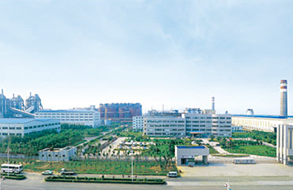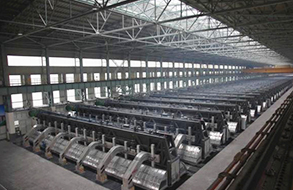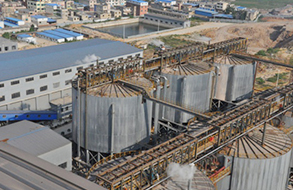Giving best technical support for Chinese alumina industry
----Interview with Cui Decheng
Executive Vice President
Northeastern University Engineering & Research Institue Co., Ltd.
- Northeastern University Engineering & Research Institue Co., Ltd. (NEUI), which named Northeastern University Engineering & Research Institue, was established from 1994 and reorganized from 2004. NEUI is principally engaged in engineering consultation, engineering design and development of relevant new technologies and equipment for nonferrous metals industry and ferrous metals industry including mining, beneficiation, smelting and processing, etc., as well as civil architecture industry.
- Asian Metal: Hello, Mr Cui! Thanks for accepting the interview. Please briefly introduce your major business.
- Mr. Cui: Hello, we mainly work on engineering design and consultation and new technologies research for alumina, primary aluminum and prebaked anode industries.
- Asian Metal: Please introduce some major projects you joined over the past several years.
- Mr. Cui: NEUI has taken over the design of more than 100 alumina production lines in China successively, which account for about 55% of total alumina capacity and 60% of operating alumina capacity in China, from major alumina & aluminum producers such as Weiqiao Aluminum, Jinjiang Group, Nanshan Aluminum, East Hope and Wanji Aluminum, etc. Our overseas projects cover Indonesia Well Harvest Winning Alumina, Nanshan Group Bintan Alumina, Jamaica JISCO Alpert Alumina and Greece Aluminum expansion project, etc.
- Asian Metal: As the major raw material for alumina production, are there any differences between Chinese origin bauxite and imported bauxite?
- Mr. Cui: Actually, Chinese origin bauxite is mainly monohydrate diaspore bauxite with Al/Si at around 5.0 and lowest at 3.0; the dissolution temperature is around 260-270℃, which leads to a high caustic soda and energy unit consumption. Limited by the tight supply, currently in Shanxi and Henan, alumina refineries are facing high production costs. However, imported bauxite is major monohydrate and trihydrate boehmite bauxite with Al/Si as high as 8.0 (some high grade Guinean bauxite could even reach 20); the dissolution temperature is around 145℃, resulted in a low caustic soda and energy unit consumption, as well as lower production costs.
- Asian Metal: Forced by the bauxite shortage, some alumina refineries in Shanxi and Henan are trying to consume imported bauxite by conducting technical upgrading. Would you please give them some advices?
- Mr. Cui: Firstly, a steady imported bauxite resource must be ensured, and production technological parameters like the dissolution temperature should be readjusted accordingly. Besides, as most imported bauxite has high organics content, a dislodge processing is essential for sedimentation and decomposition. NEUI focuses on the research of the imported bauxite application and could provide technical solution for alumina producers.
- Asian Metal: Would you please offer some suggestions for alumina enterprises to face the current sluggish market?
- Mr. Cui: According to our research, raw material cost and energy consumption accounts for about 60% and 20-25% respectively in the total alumina production cost, and financial cost accounts for about 10% while labor cost accounts for less than 1%. In my view, the best solution for alumina producers is to optimize production raw materials supply. Besides, there are also many ways for energy-saving and consumption-reducing. NEUI could provide refrigeration technical support as well.
- Asian Metal: Currently, China owns above 55% of the world's alumina production capacity. Compared with Chinese alumina enterprises, what are the advantages of alumina enterprises from other countries?
- Mr. Cui: Most overseas alumina refineries in Australia, Brazil and India were built relying on bauxite mines. They own much lower production costs by taking advantage of the stable and high performance bauxite supply. Given that reason, some Chinese companies are seeking overseas bauxite resources and planning to establish alumina refineries.
- Asian Metal: What are the major issues should be solved for Chinese companies to build alumina refineries in other countries?
- Mr. Cui: In my opinion, the first and the most important issue is to ensure the bauxite mining right. Secondly, a large investment should be scheduled on the infrastructure projects, as most major bauxite reserving countries like Guinea doesn't have a completed industrial system including power grid, railway and port. Thirdly, one who would like to build an alumina refinery should inspect the local political environmental to avoid unstable risks. Lastly, enterprises need to establish and maintain a good relationship with local citizens.
- Asian Metal: How do you think of the development of Chinese alumina industry?
- Mr. Cui: The growth of alumina industry is strongly supported by bauxite resources supply. However, China doesn't have abundant bauxite reserves to sustain such a large alumina production capacity. Moreover, with the domestic bauxite supply shortage goes further, there is no doubt that China's alumina capacity would move to coastal region or even to other countries in the future.




